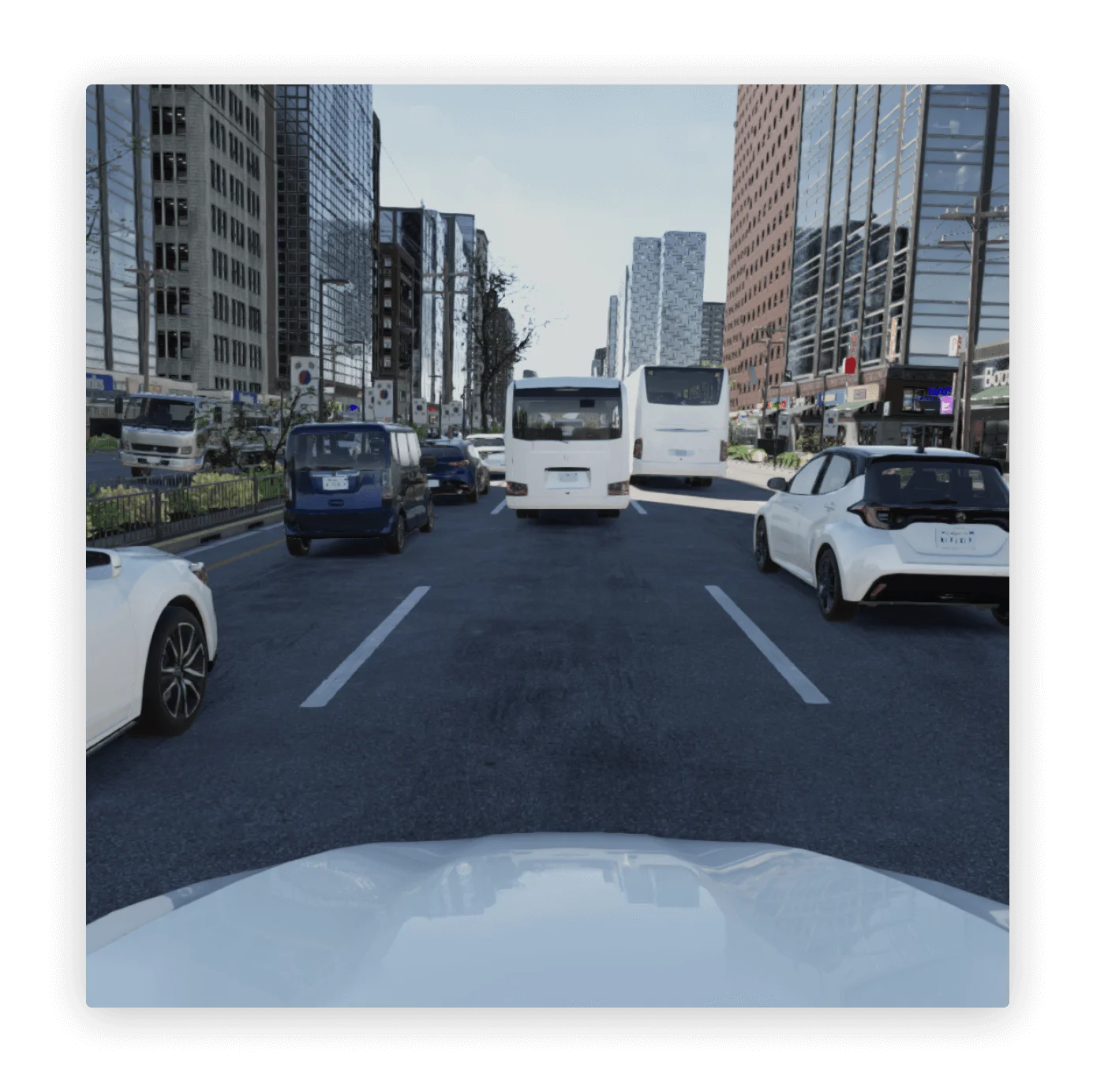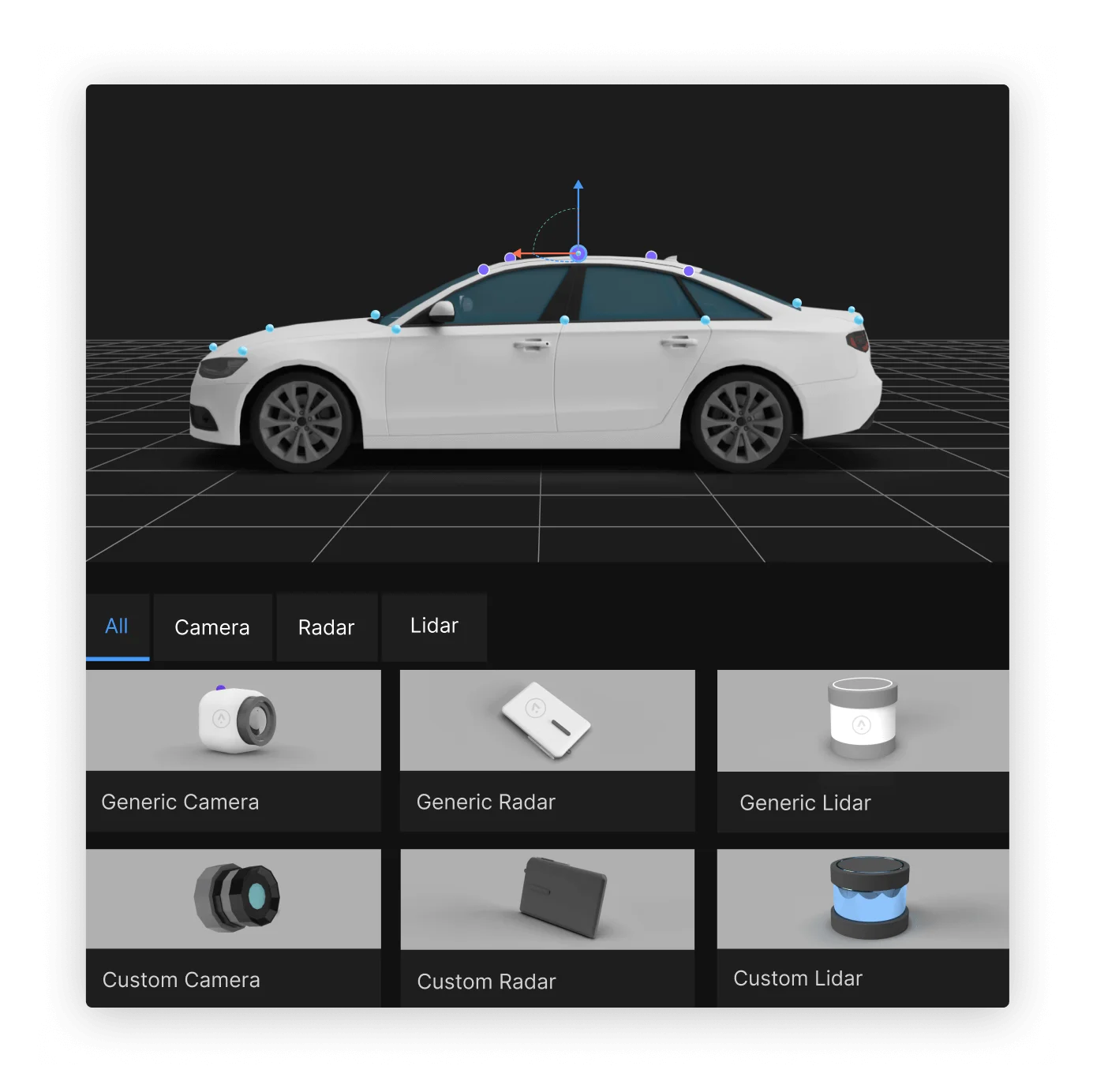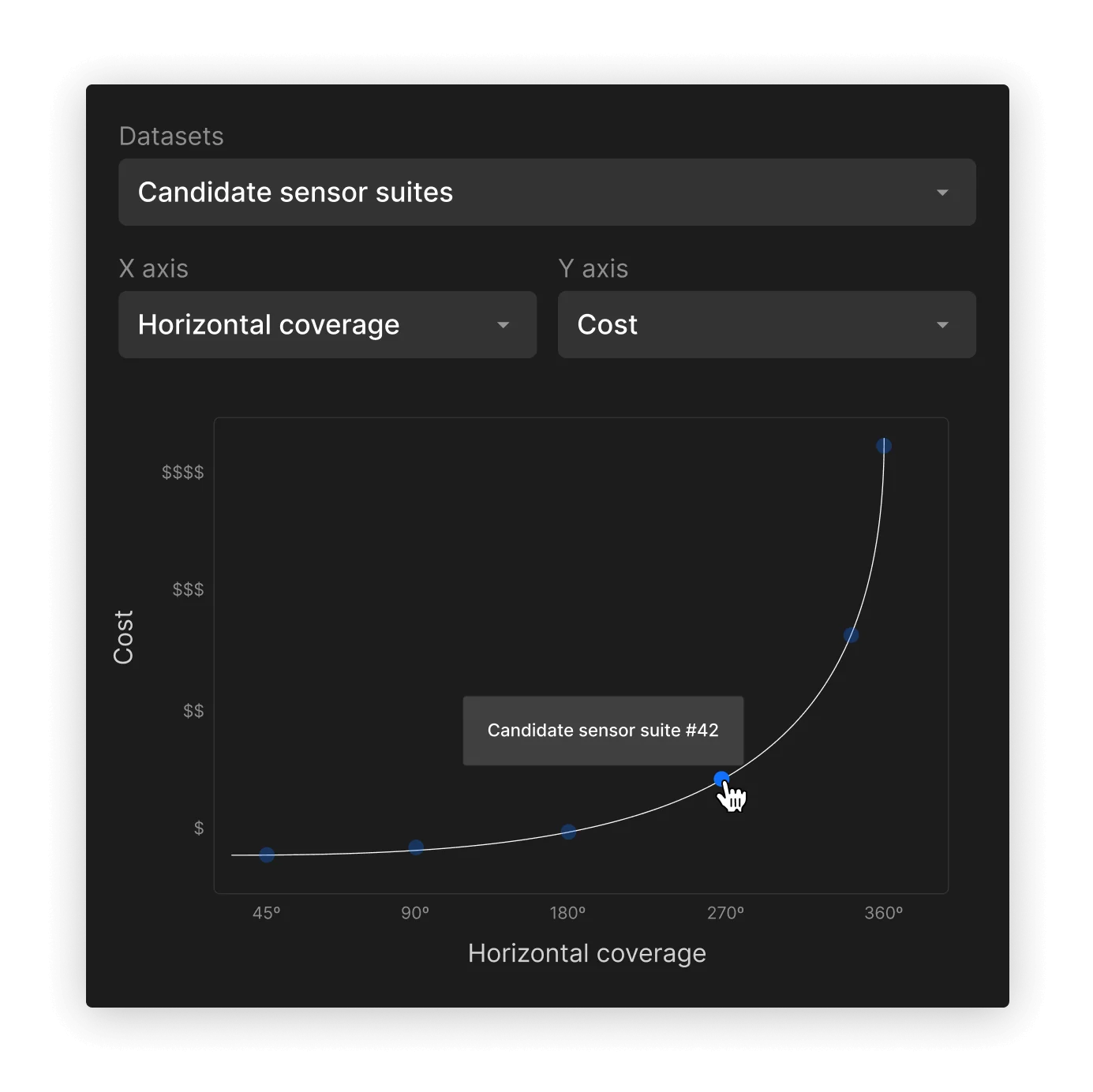Key components

Physically based rendering
Multi-spectral rendering enables teams to accurately model sensors across the electromagnetic spectrum, including sensor modalities such as camera, lidar, radar, and ultrasonic sensors. Use path tracing to maximize fidelity and hybrid ray tracing to maximize performance. Sensor Sim rendering minimizes the domain gap so that ML-based perception systems see simulated data in the same way as real data.

Real-time performance
Sensor Sim is optimized for real-time performance. It enables sensor hardware-in-the-loop (HIL) testing and cost-effective large-scale multi-sensor software-in-the-loop (SIL) testing. Directly configure simulations to ensure performance and fidelity are tuned to the specific system, test case, and budget.

Hardware-specific sensors
Applied Intuition has developed hardware-specific sensor models in collaboration with partners such as Valeo and Ouster and validated them against their real-world counterparts. Parameterize customer models from datasheets and refine them using experimental data. Alternatively, directly co-simulate external models using Sensor Sim’s ray tracing API.

Diverse simulation content
Sensor Sim’s pre-made library of 3D assets, 3D worlds and multi-spectral rendering materials covers 80% of robotics ODDs out of the box. Customize Sensor Sim to the long tail of an ODD through flexible asset editing, procedural 3D world generation, and material editing.

Automated performance evaluation
Use programmatically generated ground truth labels, performance metrics, and simulation observers to achieve a comprehensive and continuous evaluation of sensor, perception, and full-system performance.
Key components
Physically based rendering
Multi-spectral rendering enables teams to accurately model sensors across the electromagnetic spectrum, including sensor modalities such as camera, lidar, radar, and ultrasonic sensors. Use path tracing to maximize fidelity and hybrid ray tracing to maximize performance. Sensor Sim rendering minimizes the domain gap so that ML-based perception systems see simulated data in the same way as real data.
Real-time performance
Sensor Sim is optimized for real-time performance. It enables sensor hardware-in-the-loop (HIL) testing and cost-effective large-scale multi-sensor software-in-the-loop (SIL) testing. Directly configure simulations to ensure performance and fidelity are tuned to the specific system, test case, and budget.
Hardware-specific sensors
Applied Intuition has developed hardware-specific sensor models in collaboration with partners such as Valeo and Ouster and validated them against their real-world counterparts. Parameterize customer models from datasheets and refine them using experimental data. Alternatively, directly co-simulate external models using Sensor Sim’s ray tracing API.
Diverse simulation content
Sensor Sim’s pre-made library of 3D assets, 3D worlds and multi-spectral rendering materials covers 80% of robotics ODDs out of the box. Customize Sensor Sim to the long tail of an ODD through flexible asset editing, procedural 3D world generation, and material editing.
Automated performance evaluation
Use programmatically generated ground truth labels, performance metrics, and simulation observers to achieve a comprehensive and continuous evaluation of sensor, perception, and full-system performance.



.webp)
.webp)
